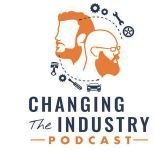By
carmcapriotto
Thanks to our Partners, AAPEX, NAPA TRACS, and Automotive Management Network Recorded Live at the TST Big Event, Michael Ingvardsen, Global Technical Training Manager from Nissens Automotive, discusses the evolving challenges and advancements in automotive air conditioning systems, including the potential warranty issues arising from using alternative refrigerants. This episode is a roadmap for staying informed, proactive, and environmentally conscious as we navigate the transition to new refrigerants. Michael Ingvardsen, Global Technical Training Manager, Nissens Automotive
Show Notes
Impacts of new refrigerants (00:03:07) Discussion on the impact of new refrigerants on the automotive aftermarket industry.
Testing and approval of new refrigerants (00:04:44) Testing and approval process for new refrigerants, including warranty implications.
Industry response and concerns (00:08:07) Concerns and responses from the industry regarding the use of replacement refrigerants.
Challenges and best practices (00:09:23) Challenges and best practices for shops in dealing with new refrigerants and components.
Warranty implications (00:09:49) Discussion on warranty implications related to the use of new refrigerants and components.
Industry communication and training (00:10:37) Importance of industry-wide communication and training on the use of new refrigerants.
System maintenance and practices (00:11:34) Impact of new refrigerants on system maintenance and best practices.
Industry readiness and response (00:13:15) Discussion on industry readiness and response to the introduction of new refrigerants.
Cost and environmental considerations (00:18:04) Considerations for choosing replacement refrigerants based on cost and environmental impact.
The concern about heat pump systems (00:19:22) Discussion about the technical concerns and impact of heat pump systems on warranty situations.
European focus on heat pump cars (00:20:15) Insights into heat pumps by European vehicle manufacturers.
Training for diagnosing heat pump systems (00:21:21) The necessity of understanding heat transfer and the flow of refrigerant in a heat pump system for effective diagnosis.
Life lessons and analogies with heat pumps (00:22:47) Humorous analogies and life lessons related to heat pump systems and relationships.
Challenges and changes in refrigerants (00:26:15) Discussion about the re-evaluation of refrigerants in Europe and the challenges in adapting to new environmental regulations.
Importance of staying updated and educated (00:27:09) Encouragement for professionals to stay updated, attend classes, and be experts in air conditioning systems.
Thanks to our Partners, AAPEX, NAPA TRACS, and Automotive Management Network Set your sights on Las Vegas in 2024. Mark your calendar now … November 5th-7th, 2024. AAPEX - Now more than ever. And don’t miss the next free AAPEX webinar. Register now at http://AAPEXSHOW.COM/WEBINAR NAPA TRACS will move your shop into the SMS fast lane with onsite training and six days a week of support and local representation. Find NAPA TRACS on the Web at http://napatracs.com/ Get ready to grow your business with the Automotive Management Network: Find on the Web at http://AftermarketManagementNetwork.com for information that can help you move your business ahead and for the free and informative http://LaborRateTracker.com Connect with the Podcast: -Follow on Facebook: https://www.facebook.com/RemarkableResultsRadioPodcast/ -Join Our Private Facebook Community: https://www.facebook.com/groups/1734687266778976 -Subscribe on YouTube: https://www.youtube.com/carmcapriotto -Follow on LinkedIn: https://www.linkedin.com/in/carmcapriotto/ -Follow on Instagram: https://www.instagram.com/remarkableresultsradiopodcast/ -Follow on Twitter: https://twitter.com/RResultsBiz -Visit the Website: https://remarkableresults.biz/ -Join our Insider List: https://remarkableresults.biz/insider -All books mentioned on our podcasts: https://remarkableresults.biz/books -Our Classroom page for personal or team learning: https://remarkableresults.biz/classroom -Buy Me a Coffee: https://www.buymeacoffee.com/carm -The Aftermarket Radio Network: https://aftermarketradionetwork.com -Special episode collections: https://remarkableresults.biz/collections
Click to go to the Podcast on Remarkable Results Radio













Recommended Posts
Create an account or sign in to comment
You need to be a member in order to leave a comment
Create an account
Sign up for a new account in our community. It's easy!
Register a new accountSign in
Already have an account? Sign in here.
Sign In Now